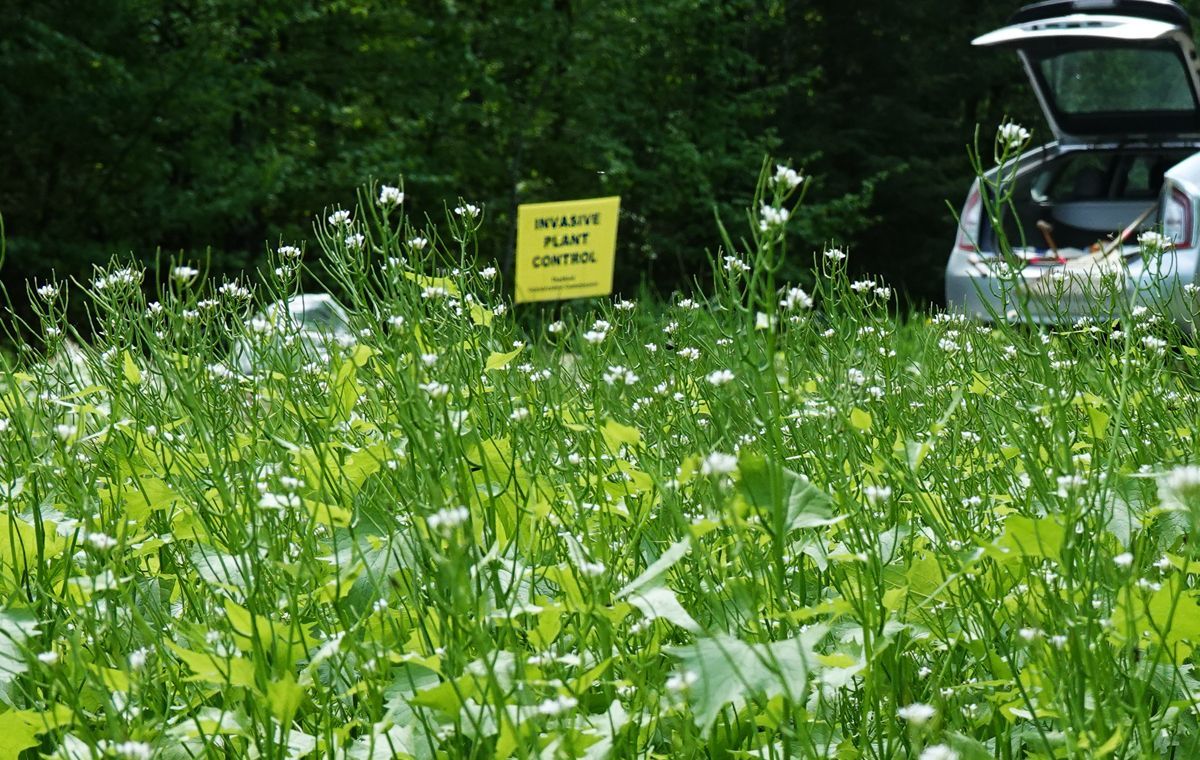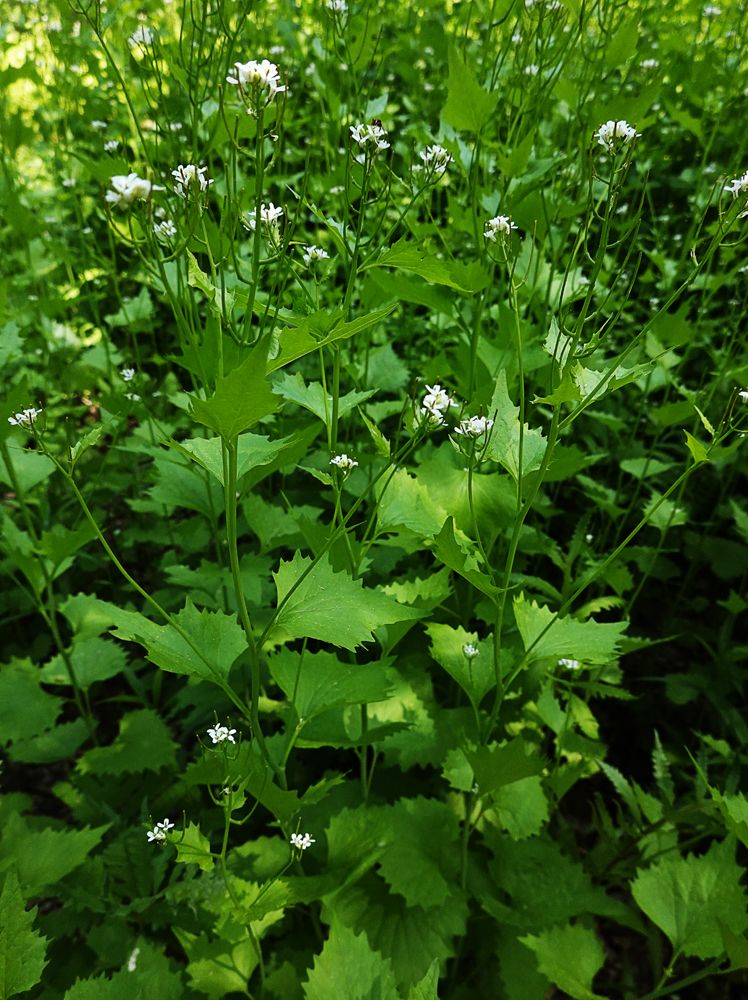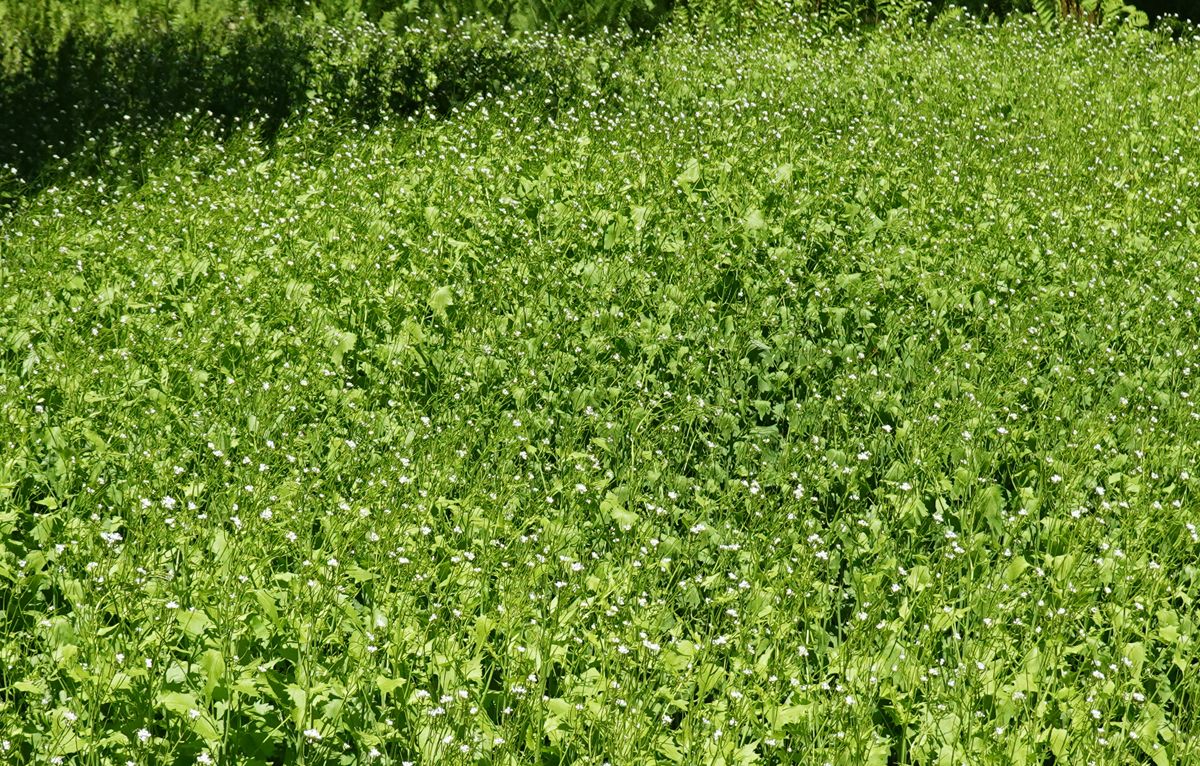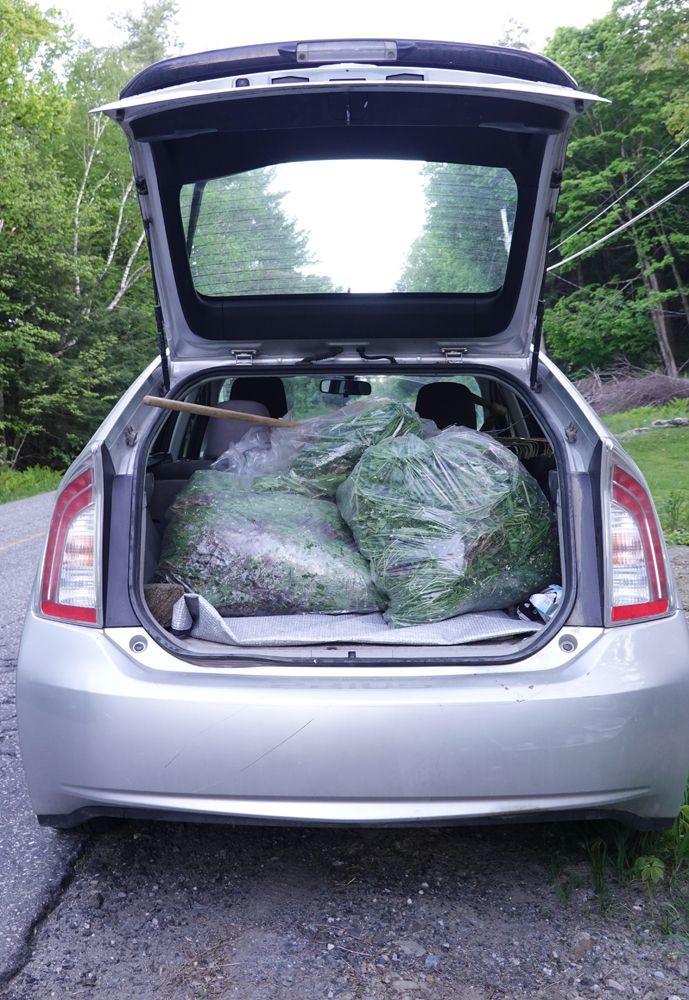It's not too late to pull garlic mustard
Garlic mustard is the epitome of an invasive plant and a very aggressive spreader.

Residents were first encouraged by the Thetford Conservation Commission to pull the invasive weed garlic mustard on Green Up day. And the opportunity to easily spot this plant and rip it up is not over yet. Look for a small cluster of petite, four-petaled, white flowers atop a central stem and triangular leaves with toothed margins. A garlic smell when the young leaves are crushed is a key feature for those with good noses. Plants vary in height, from under a foot to two or more feet in rich soil.

Why eradicate this plant when we have so many other weeds?
Garlic mustard is the epitome of an invasive plant and a very aggressive spreader. Each plant produces up to 8,000 seeds in long wiry capsules. The seeds are flung up to ten feet when the ripe capsules explode. On Tucker Hill road it is obvious from the pattern of infestation that garlic mustard seeds are also carried to new sites by water runoff. When they germinate, usually in 1-2 years, they can produce seedling densities of up to 24,000 per square yard.

Garlic mustard is particularly harmful in rich forested locations. For a start, it crowds out other herbaceous plants, including beloved wildflowers like trillium, spring beauty, bloodroot, and Jack-in-the-pulpit. Swaths of these wildflowers can soon be lost, replaced by garlic mustard monocultures.
Just as bad, the roots of garlic mustard exude toxic compounds called glucosinolates that prevent the seeds of other plants from germinating. These compounds also kill beneficial soil fungi. For native tree seedlings, root associations with fungi are essential for growth. Thus, by killing fungi, garlic mustard outcompetes hardwood tree seedlings and harms the regeneration of our valuable forests.
Fortunately garlic mustard is easy to pull.
When disposing of garlic mustard it is important not to leave it where seeds can be shed from the uprooted plants. To be on the safe side, stuff everything into a plastic garbage bag, and leave it in a sunny location to “cook” for several weeks until the plants decompose. Disposal of plant material in the trash is no longer permitted in Vermont, so it would be best to bury the plant matter after that, or inquire with the composting volunteer at recycling.

Learn more about invasives on this helpful state website.
